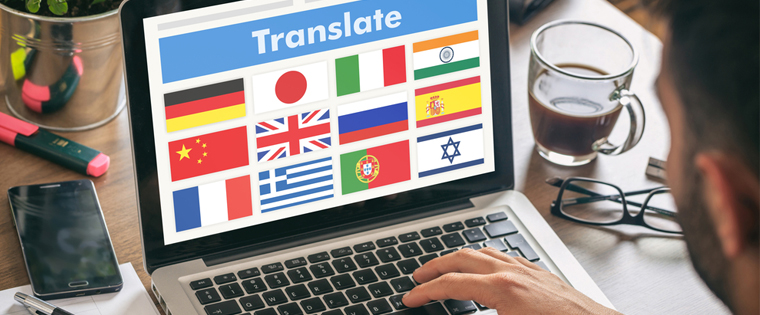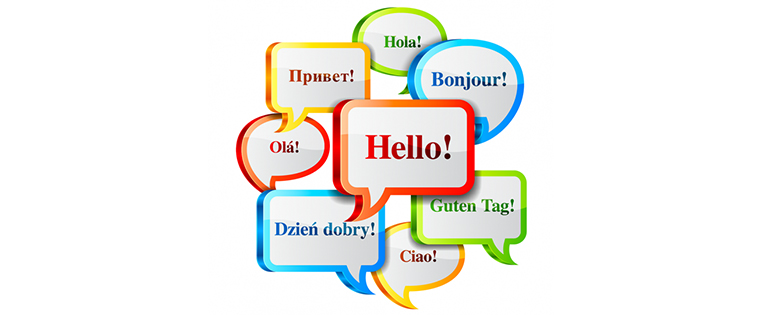4 Easy Steps to Translate Online Courses into Multiple Languages

Recently, a multinational pharmaceutical company approached us to translate their online product training material on their new antibiotic into 16 languages. The drug maker wanted us to complete the task in 25 days. We met the client’s requirement by following a proven four step process. Read on to know what we did.
Step 1: Translate learning content into the desired languages
We completed this step successfully, by focusing on the aspects mentioned below.
- Choice of the right translator: This is inarguably the most critical aspect in the translation of your e-learning course. We selected translators who were efficient and had a proven track record of translating product training courses for the pharmaceutical industry.
- Creation of “English” templates for translation: When the English version of the technology-enabled product training material was given to us, we developed a translation template which contained the text that had to be rendered into multiple target languages and sent it to the translators.
- Use of computer-aided tools to translate the content: We made sure that the translators used computer-aided translation (CAT) tools to render the e-learning content. CAT applications ensure consistency in online course translations and minimize costs, thanks to their in-built memory capabilities.
- Quality checks on the translated content: We implemented a robust process to ensure the translations of the web-based learning material were of high quality. Each translator checked his work for errors (self-QA), and then, his work was checked by the lead translator. This helped produce highly accurate translations of the learning content.
- Collection of the translated templates: We made sure that all translated e-learning content templates were collected in the proper format. This went a long way in ensuring the hassle-free completion of subsequent steps in the process.
Step 2: Get the content reviewed
After we collected all the files from the translators, we got the training content in the target languages proofread. We followed the best practices listed below to check the quality of the content effectively.
- Get the content checked by the client’s in-country reviewers: It was time to get the translated e-learning content reviewed by proofreaders, who are native speakers of the target languages, at the client’s end. We made sure the in-country reviews were completed on time, so that the e-learning translation project could be completed without delay.
- Send voice samples to the client for finalization of narrators: After the content was finalized, we sent sample works of various audio narrators in each target language to the client. The client examined these samples and selected the persons who would narrate the course.
- Draw and finalize schedules for recording audio narration: Once the client finalized the narrators, we came up with schedules of audio recordings of the narration in the target languages and finalized them.
Step 3: Complete the audio recording and develop the translated courses
We recorded the audio narration and integrated it with the translated online training content to produce e-learning courses in the desired languages. Here are a few tips we followed to complete this step effectively.
- Develop the audio script and send it for recording: We prepared the audio script in the target languages and sent them to the respective narrators. We included “pronunciation notes” to ensure narration of high quality. We also implemented these best practices of developing audio scripts for translated e-learning courses.
- Check the quality of the recorded audio narration: Once the narration is recorded, it was time to check its quality. We used an internal linguist to ensure the narration was error-free.
- Review the courses in target languages internally: We had an internal team conduct a quality check of the courses in the sixteen target languages to ensure they did not contain errors.
Step 4: Send the courses to the stakeholder for final review and deliver them
After completing the internal review of the translated online courses, we:
- Released the courses to the client: The translated e-learning courses were sent to the client for approval. The client’s proofreaders reviewed the course and suggested a few minor changes to courses in three languages.
- Implemented the feedback: We updated the online courses as per the suggestions of the client’s proofreaders. Then, we sent it for their review, and the courses were approved.
- Made the courses LMS compliant: After getting the approval from the proofreaders, we made the courses in all target languages compliant to SCORM and sent them to the client for a technical review.
- Uploaded the courses on the LMS for delivery: Once the technical review was completed, the translated e-learning courses were uploaded on the client’s LMS, bringing the translation project to an end.
Thus, we could translate the online product training material into sixteen languages successfully in just 25 days. How do you translate e-learning content? We’d love to know.





